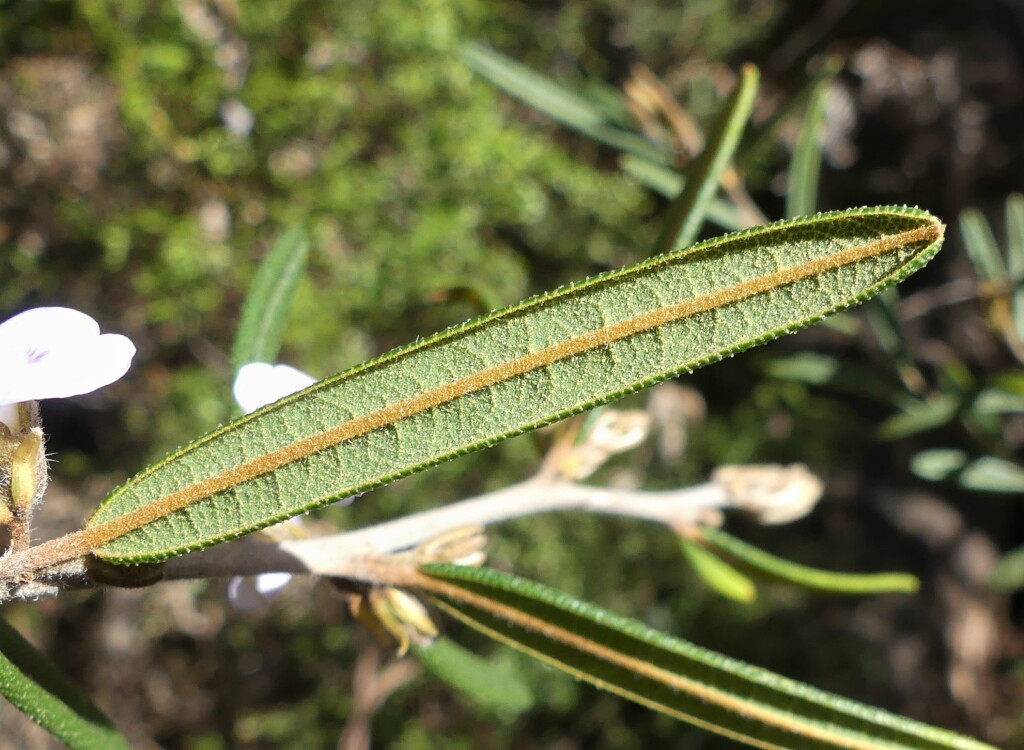Hovea asperifolia
I.Thomps.Shrub to 3 m high, usually erect; branchlets somewhat tomentose with curled to ±straight brown hairs. Leaves narrow-oblong to narrow-linear, sometimes narrow-elliptic, 1–8(–10) cm long, 2.5–9 mm wide; apex truncate to subacute, sometimes with a short mucro; upper surface flat to strongly arched up either side of depressed midrib, glabrous or with scattered hairs mainly confined to midrib, scabrous; lower surface subglabrous or with sparse to moderate cover of white, cream or golden indumentum, hairs crumpled or coiled, sometimes with longer simple hairs; margins recurved to revolute, sometimes largely concealing lower surface; stipules ovate to lanceolate, 0.5–2 mm long, usually densely hairy. Inflorescence sessile, 2-flowered, rarely 3-flowered; pedicle 1–2(–4) mm long; bract inserted up to 2 mm below bracteoles, ovate to lanceolate, sometimes orbicular, 1–4(–5.5) mm long; bracteoles ovate to lanceolate, 1.5–4(–5.5) mm long; calyx 3–5(–5.5) mm long; corolla pale to deep mauve; standard 7–10 mm long (including claw), usually wider than long; keels shorter than wings; stamen-filaments to c. 5 mm long. Pods sessile, with moderate to dense cover of whitish to golden indumentum.
VRiv, Gold, CVU, GGr, NIS, EGU, HSF, HNF, VAlp.
2 subspecies.
Previously included in Hovea pannosa. It can be distinguished from that species by its shorter less spreading indumentum, shorter stipules and calyx, and leaves that are typically scabrous on the upper surface. Also see note under H. rosmarinifolia.
 Spinning
Spinning

